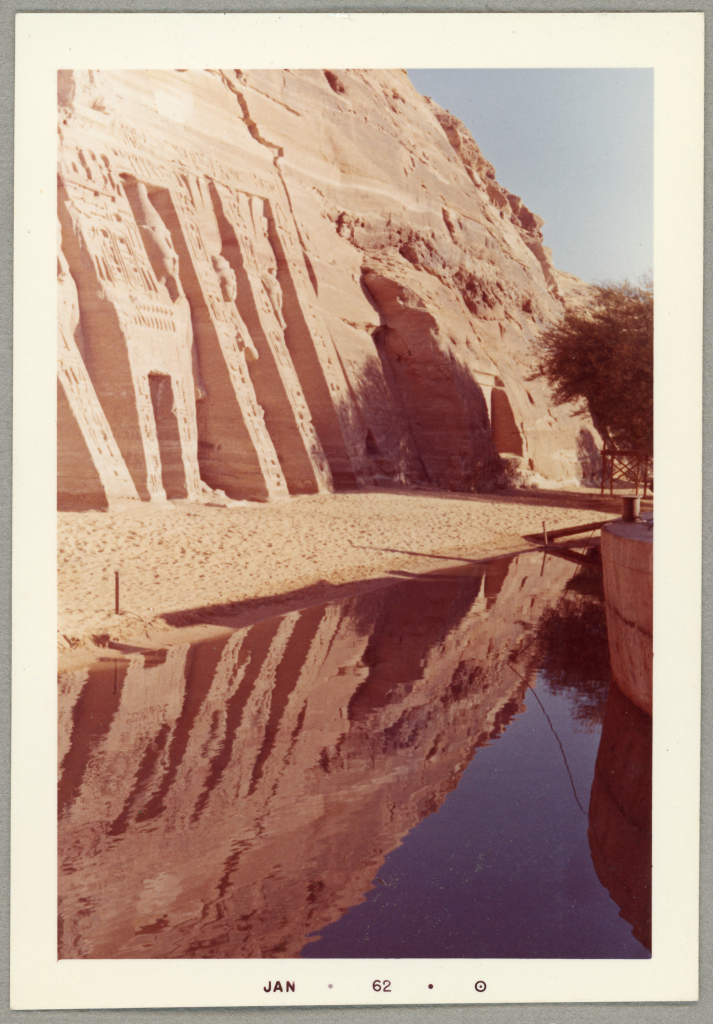 Photo of the Temple of Queen Nefertari, Abu Simbel, taken by Paolo Mora in 1962.
Photo of the Temple of Queen Nefertari, Abu Simbel, taken by Paolo Mora in 1962.
ICCROM has recently received a donation of valuable records produced by Paolo and Laura Mora, two internationally renowned Italian conservators. They were involved in numerous conservation campaigns in heritage sites and monuments of high importance worldwide.
Among the Moras' archive, there are around 5 000 photographs depicting their missions and conservation activities. The photograph you see here depicts the Temple of Queen Nefertari at Abu Simbel in 1962 before its transfer to a new location with the start of the Aswan High Dam project. During the International Campaign to Save the Monuments of Nubia, launched by UNESCO and officially inaugurated in 1960, the temples of King Ramses II and Queen Nefertari in Abu Simbel (the twin temples) became threatened with flooding and urgent intervention was required to save them. Between 1964 and 1968, the entire site was cut into large blocks, lifted and reassembled in a new location 65 metres higher and 200 metres back from the river. This operation is considered one of the greatest works of archaeological engineering.
The Temple of Queen Nefertari (the Small Temple) was carved in the mountains and dates to the reign of King Ramses II in the 13th century BCE. The temple is dedicated to the goddess Hathor, personified by Nefertari, Rames's most beloved of his wives.
This photograph was taken by Paolo Mora in 1962 when he participated in the Second Meeting of Experts for Safeguarding Nubian Monuments, held in Cairo and Abu Simbel. Additional photographs, correspondence, reports, news clippings and architectural drawings are held by ICCROM Archives, as ICCROM was involved in the Nubian Campaign. Heritage samples from Abu Simbel are also available in the Mora samples collection.
